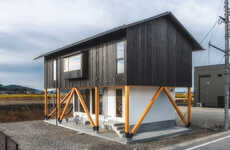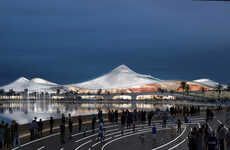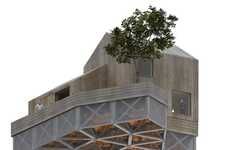
The Artificial Wetland Flood Prevention Center Mitigates Rising Waters
Michael Hemsworth — April 5, 2016 — Art & Design
References: margotkrasojevic.org & tuvie
Water levels around the world are rising, so the Artificial Wetland Flood Prevention Center is designed to offer a solution for the Mississippi River. Designed by Margot Krasojevic, the center would act as a floating levee system that would help to divert water to prevent floods and help incite more sediment to settle.
The center is crafted from post-consumer materials to help increase the eco-friendly nature of the structure. When in place, the Artificial Wetland Flood Prevention Center would help to divert water, mitigate the chances of flooding and help to stabilize the area through various methods.
Rising water levels around the world are beginning to be noticed by a variety of different communities ranging from those in Asia, to here in North America. This conceptual building design is something we could one day see on our shorelines as a preventative measure against rising waters.
The center is crafted from post-consumer materials to help increase the eco-friendly nature of the structure. When in place, the Artificial Wetland Flood Prevention Center would help to divert water, mitigate the chances of flooding and help to stabilize the area through various methods.
Rising water levels around the world are beginning to be noticed by a variety of different communities ranging from those in Asia, to here in North America. This conceptual building design is something we could one day see on our shorelines as a preventative measure against rising waters.
Trend Themes
1. Rising Water Levels - The increasing water levels worldwide create a demand for innovative flood prevention solutions.
2. Sustainable Infrastructure - The use of post-consumer materials in building design presents opportunities for eco-friendly construction practices.
3. Floating Levee Systems - The concept of floating levee systems offers a disruptive innovation in flood mitigation strategies.
Industry Implications
1. Architecture - Architects can explore new design approaches to address rising water levels and incorporate sustainable materials.
2. Construction - Construction companies have the potential to adopt environmentally-friendly practices by utilizing post-consumer materials in flood prevention projects.
3. Civil Engineering - Civil engineers can develop innovative techniques and technologies for implementing floating levee systems effectively.
5.7
Score
Popularity
Activity
Freshness























